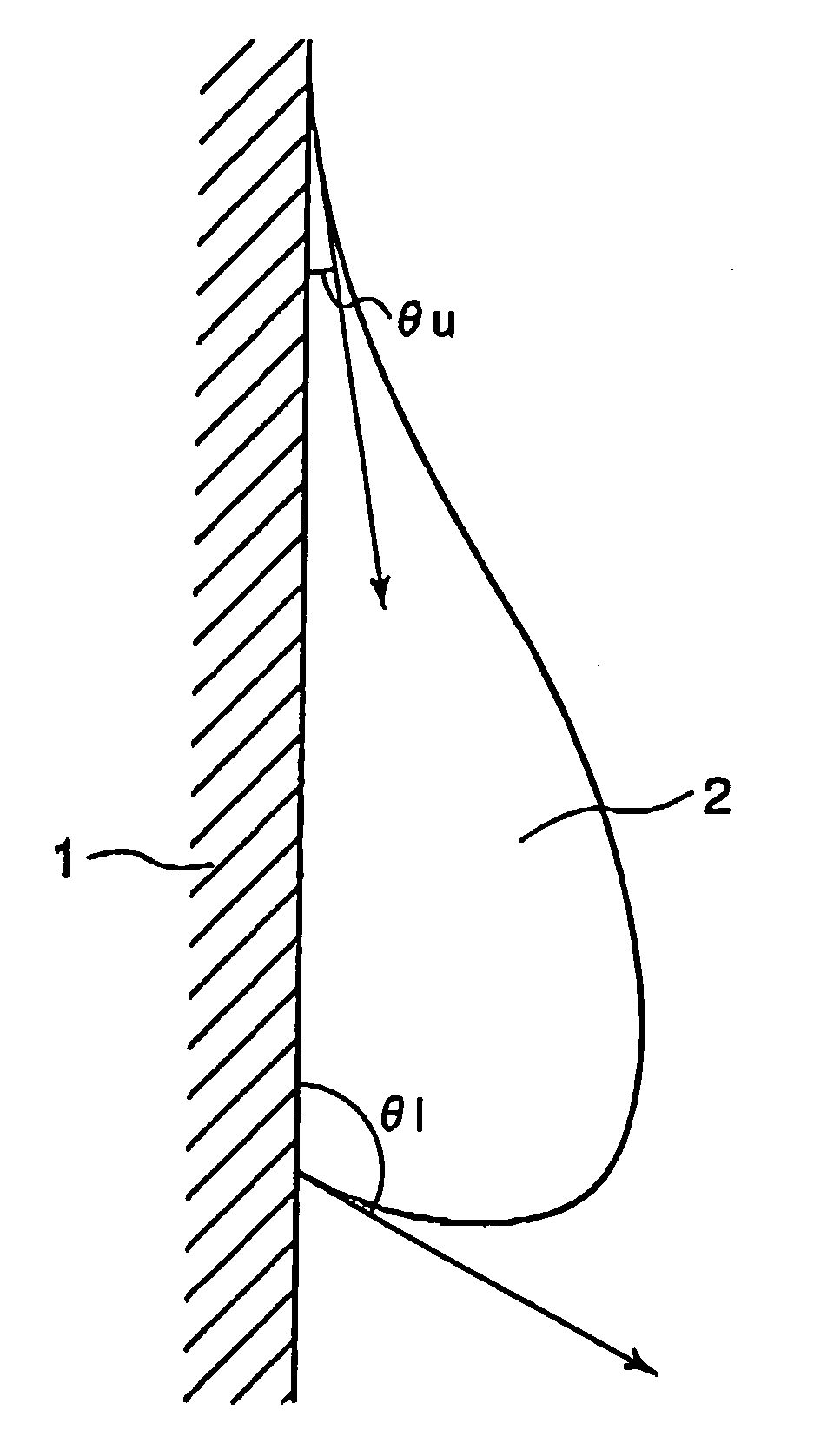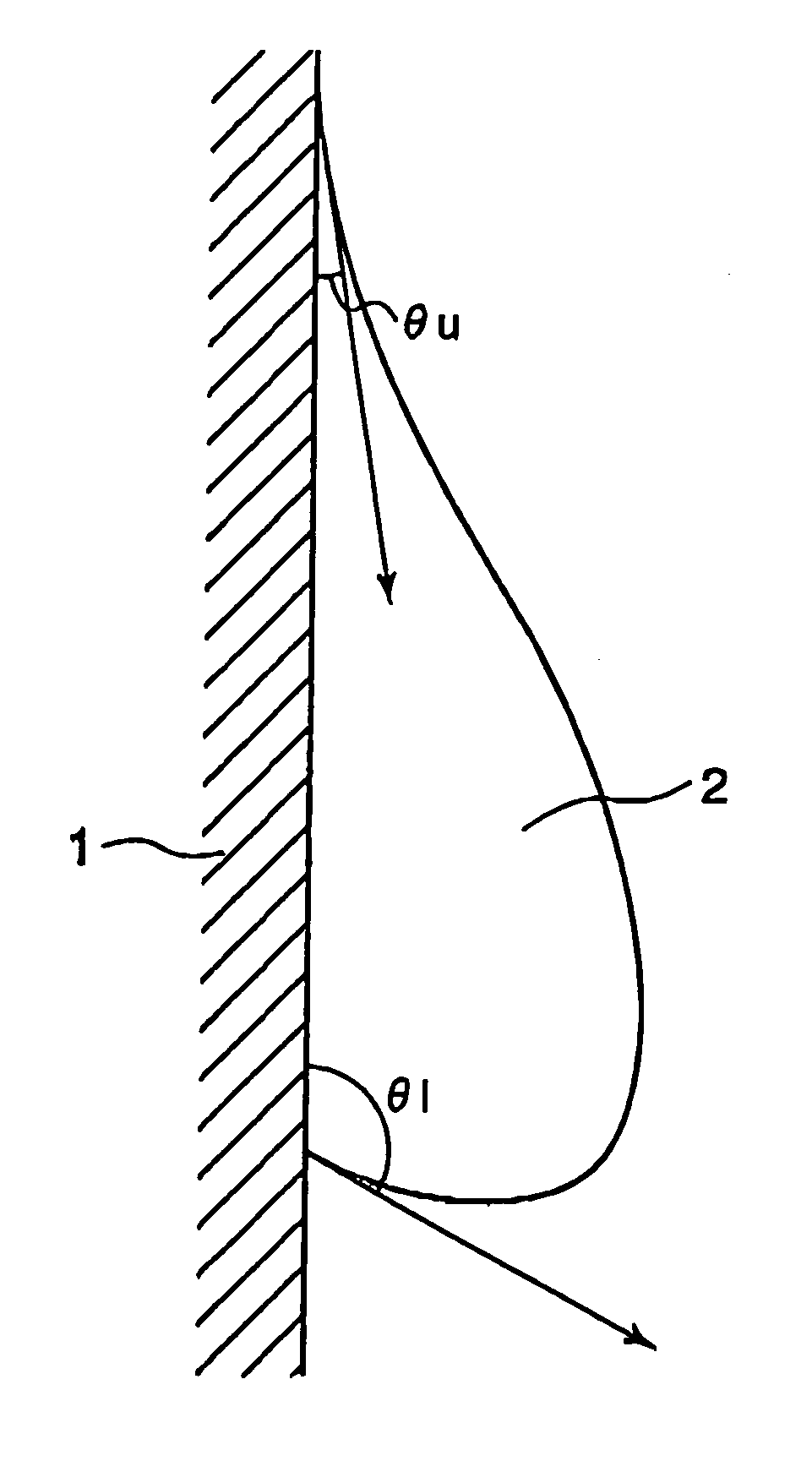Self-cleaning member and coating composition
a self-cleaning and coating composition technology, applied in the direction of silicates, silicon compounds, other chemical processes, etc., can solve the problems of posing problems, worsening of esthetic appearance, and deteriorating living environment, and achieve the effect of easy washing away the deposits
- Summary
- Abstract
- Description
- Claims
- Application Information
AI Technical Summary
Benefits of technology
Problems solved by technology
Method used
Image
Examples
embodiment 1
of Self-Cleaning Surface by Coating Composition. Paint
[0028]According to a more preferred embodiment of the present invention, it is preferable that the surface of the coating layer of the self-cleaning member is porous, and such porous surface is preferably formed by the fine pores of a diameter of about 5 μm to about 30 μm with the density of 200 pores / mm2 or more. With such pore size and number density, the self-cleaning property by the enlarged water drops falling down the surface at once can be more effectively exhibited, because water easily infiltrates into the fine pores and the water drops are strongly trapped in the fine pores on the porous surface. Such pore size and number density can be measured by the particle (circle) shape analysis function of a laser microscope.
[0029]According to a preferred embodiment of the present invention, it is preferable that the surface comprises a hydrophobic substance as a matrix. This makes it possible to contribute to the aforementioned ...
embodiment 2
ent Treatment to the Porous Surface Formed by Anodic Oxidation Treatment
[0060]According to a preferred embodiment of the present invention, the self-cleaning member can be produced by utilizing the anodic oxidation treatment as the means to form the porous surface, and utilizing the treatment with a water-repellent substance as the means to decrease the surface energy of the surface.
[0061]The aforementioned anodic oxidation treatment is a treatment to immerse aluminum as an electrode in an electrolysis vessel containing sulfuric add or oxalic acid solution as an electrolyte bath and to perform electrolysis by direct current or alternative current, to obtain a dense aluminum oxide film of 5 μm to 100 μm thick on the aluminum surface. It is possible to grow the film to the thickness of several mm depending on the condition. Since the oxidized film is dissolved by the ions such as sulfate as it grows depending on the energizing time, the grown aluminum oxide film forms cylindrical fine...
embodiment 3
[0064]According to a preferred embodiment of the present invention, as the means to produce the self-cleaning member, a porous surface may be formed on a resin substrate which is originally a hydrophobic surface. The means to form the porous surface is not particularly limited, and any means can be utilized. For, example, the porous surface may be formed directly on the resin substrate utilizing a machine processing technique using a drill or an end mill, a laser processing technique using an excimer laser or CO2 laser, and the like. Alternatively, the desired porous structure may be formed on the resin substrate surface utilizing a mold.
[0065]As the aforementioned resin substrate, although not particularly limited, a polycarbonate resin, an acrylic resin, a polyacetal resin, an unsaturated polyester resin, a polystyrene resin, a polypropylene resin, and the like are exemplified.
PUM
| Property | Measurement | Unit |
|---|---|---|
| contact angle | aaaaa | aaaaa |
| contact angle | aaaaa | aaaaa |
| contact angle | aaaaa | aaaaa |
Abstract
Description
Claims
Application Information
 Login to View More
Login to View More - R&D
- Intellectual Property
- Life Sciences
- Materials
- Tech Scout
- Unparalleled Data Quality
- Higher Quality Content
- 60% Fewer Hallucinations
Browse by: Latest US Patents, China's latest patents, Technical Efficacy Thesaurus, Application Domain, Technology Topic, Popular Technical Reports.
© 2025 PatSnap. All rights reserved.Legal|Privacy policy|Modern Slavery Act Transparency Statement|Sitemap|About US| Contact US: help@patsnap.com


